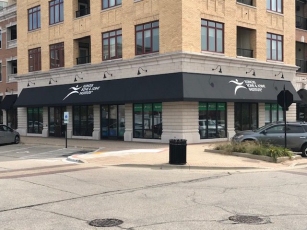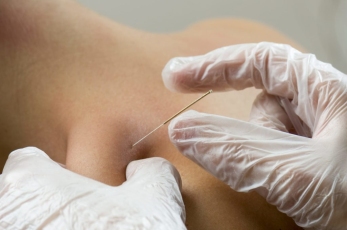Direct Access allows for patients to see a physical therapist without a referral. So, if you wake up one morning with a stiff neck or lower back pain from lifting heavy objects the day before, you can go right to seeing a physical therapist at Illinois Bone & Joint Institute (IBJI).
Physical therapists can evaluate your pain, provide non-pharmacological treatment to decrease your pain, and improve your functional mobility. If the assessment reveals a problem that needs to be seen by a physician, we can help facilitate a referral to one of IBJI’s orthopedic or pain management physicians for further assessment.
Manual therapy is a specialized form of physical therapy, delivered with the hands, as opposed to a device or machine. Manual Therapists use their hands to put pressure on muscles, tissues and manipulate joints in an attempt to decrease pain caused by muscle spasm, muscle tension, and joint dysfunction.
Direct Access allows a physical therapist to evaluate the source of your pain right away and apply treatment to decrease the tension or stiffness. Once the source is identified, the physical therapist can apply soft tissue mobilization, joint mobilization, neural mobilization and may even use trigger point dry needling to break the pain cycle.
To help decrease the pain, therapeutic exercise or neuromuscular re-education can be utilized. At first, the exercise is gentle to encourage healing and not irritate the tissue further. As the tissue improves and heals, we increase the level of exercise to match the tolerance of the tissue.
The goal of treatment is to not only decrease or eliminate pain, but to improve the ability of the tissue to tolerate normal forces again, so that you can return to your previous level of activity. The physical therapist will continually reassess the injury throughout treatment. If we feel the injury/tissue is not progressing as expected, we will refer the patient to one of IBJI’s physicians for additional assessment.
Clinical research advocates for the use of manual therapy. A randomized clinical trial looking at manual therapy and exercise for neck pain in Spine by Walker, et. al.1, found that, “An impairment-based manual therapy and exercise program resulted in clinically and statistically significant short- and long-term improvements in pain, disability, and patient-perceived recovery in patients with mechanical neck pain when compared to a program comprising advice, a mobility exercise, and subtherapeutic ultrasound.”
A systematic review and meta-analysis of treatment for chronic low back pain, also in Spine by Coulter, et. al.2 revealed, “There is moderate-quality evidence that manipulation and mobilization are likely to reduce pain and improve function for patients with chronic low back pain.”
1. The Effectiveness of Manual Physical Therapy and Exercise for Mechanical Neck Pain: A Randomized Clinical Trial. Walker, Michael J et al. Spine. 33(22):2371-2378, October 15, 2008.
2. Manipulation and Mobilization for Treating Chronic Low Back Pain: A Systematic Review and Meta-analysis. Coulter, Ian D. et al. The Spine Journal. Volume 18, Issue 5, 866-879, 2018
About the Author
Dain Hampton, PT, DPT, OCS, COMT, is the facility manager at Illinois Bone & Joint Institute Rehabilitation in Buffalo Grove. Dain is also the manual therapy special interest group lead and has presented frequently on spinal assessment and treatment.

Dain Hampton, PT, DPT, OCS, COMT,Facility Manager, Illinois Bone & Joint Rehabilitation, Buffalo Grove




